Interview with Alan Pullman of Studio One Eleven on envisioning the future of Los Angeles
The potential of architecture to reshape cities is immense. With the utilization of groundbreaking materials, partnering with other architecture firms to actualize community-wide development plans, or even revolutionizing public transportation for entire regions, design has the ability to drastically affect how we engage with our built environments. In a one-on-one conversation with ArchDaily, Alan Pullman, a principal at Studio One Eleven, expounds on his firm’s outlook for the future of Los Angeles and their methodology for architecture and urban design.
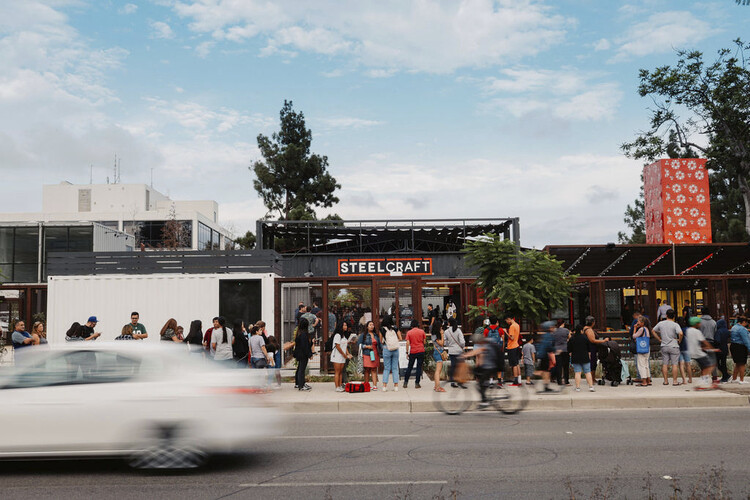
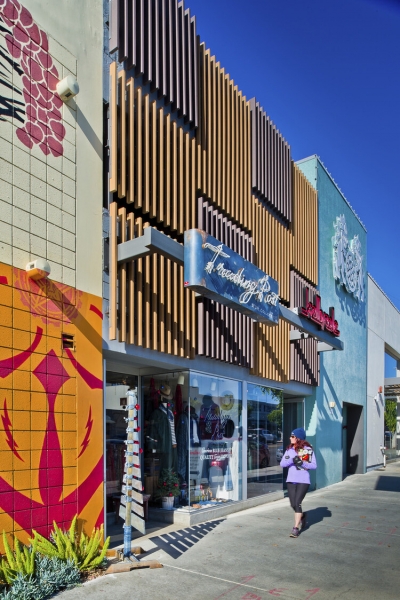
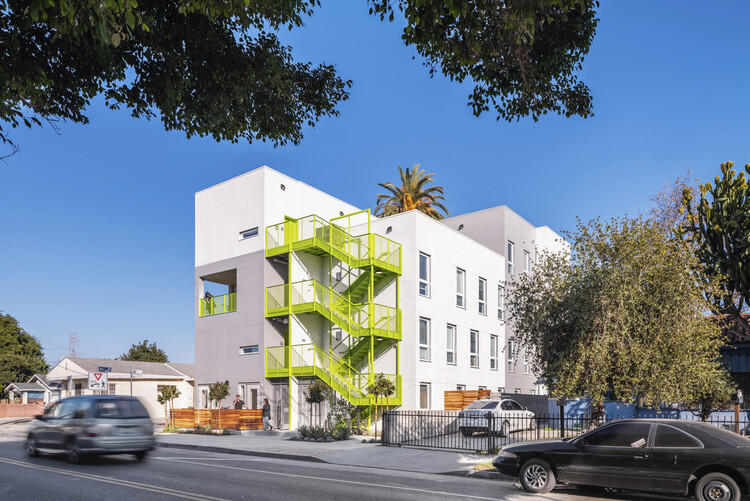
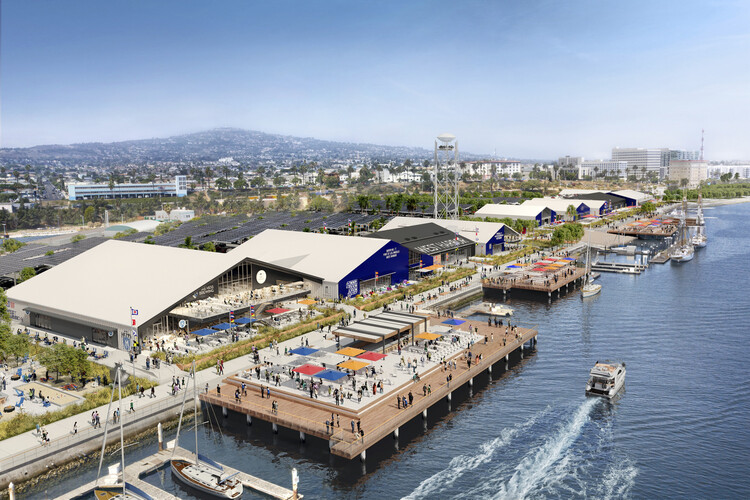
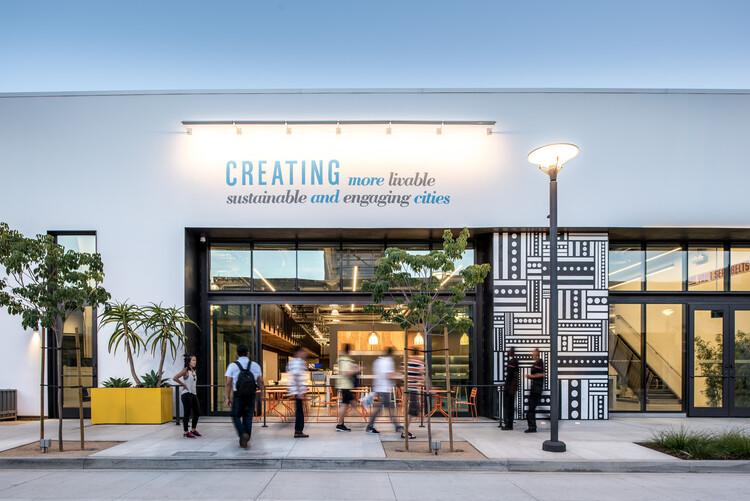
Studio One Eleven HQ. Image © Carlos R. Hernandez
KO: What is the overall approach of your company to designing projects of all sizes?
AP: We are convinced that designing great urban places can establish dynamic, healthy, and sustainable communities. By being flexible and engaging with local communities through design, development, programming, and strategy, we have successfully created positive changes in cities.
KO: What are the design principles that your company follows?
AP: While we approach each project without any predetermined methodology, our team shares common design values that guide our work. We aim to renew and regenerate existing areas to develop sustainable and resilient communities. We embrace eccentricity, roughness, and informality to create authentic and genuine spaces. The best way to achieve this is through incremental interventions that unfold over time, creating diverse forms, uses, and human-scale developments. We believe that less is more, and that innovation, affordability, a diverse tenant mix, and sustainability can result from working with existing structures and limited budgets. We also value nimble thinking, avoiding formulaic solutions, and challenging the conventional development process to cater to a wide range of stakeholders, beyond just the immediate needs of our clients.

Cadence Park. Image via Studio One Eleven
KO: How does your firm’s portfolio of residential work, especially in affordable housing, and projects for public service reflect its partnership with the public sector?
AP: Our practice started by collaborating with redevelopment agencies in Southern California, semi-public organizations that use tax increment financing to revitalize commercial corridors and districts and create affordable housing. Through our work on low-budget commercial storefront improvement programs in under-resourced areas, such as Leimert Park, La Brea Avenue, and Fourth Street, we recognized the importance of maximizing impact with minimal cost and using design to benefit all segments of the city, not just the affluent ones.
However, we also realized that design alone was insufficient for long-term success. Community involvement, ongoing programming and management, and adequate resources for maintenance were critical. When these elements came together, we observed long-lasting and positive outcomes for communities and businesses. Our experience in collaborative placemaking and the significance of place strategy and ongoing management have influenced our approach to all projects.
Moreover, we have been working closely with LANI (Los Angeles Neighborhood Initiative), a non-profit organization established to administer community improvement projects following the 1994 civil unrest in the City. From LANI, we’ve learned to prioritize giving the community a voice in how their neighborhood should develop and focusing on their needs rather than just the aesthetics.
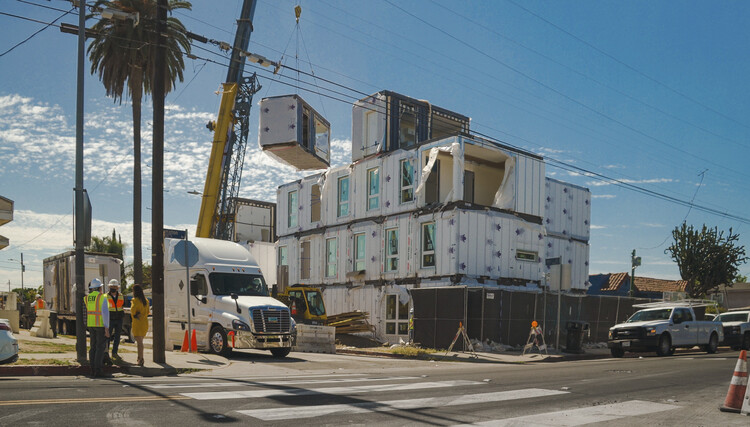
Watts Works. Image © Paul Turang

Watts Works. Image © Paul Turang
KO: In terms of innovation, you’re working on a housing development that features modular construction techniques. What was the rationale behind utilizing shipping containers for this project?
AP: Our team’s initial experience of reusing shipping containers was for a series of pop-up food hubs, led by my partner Michael Bohn, called Steelcraft. These helped revive commercial corridors and create a community gathering places, and we wanted to leverage the success of recycled containers to other uses. We had been following the trend of containers as dwelling units to address an urgent need for more affordable and sustainable housing. For our first prefabricated residential project, Watts Works, we used containers to deliver 24 housing units for people who had experienced homelessness. Applying the lessons from Steelcraft, we significantly reduced construction time and saved over 20% of the cost compared to conventionally built units.
Also, we had ARUP analyze the carbon savings of using locally sourced shipping containers, and we saved over 80 tons of GHG versus all new construction. These are significant savings in time, and money, and lowered embodied carbon that we need to continue scaling up to better address our housing needs and climate goals. We’re now working on projects employing other prefabrication and modular construction types. What we’ve learned in modular is that partnering with thoughtful fabricators and builders in an integrated process is essential to delivering housing faster and less expensively. And while speed and cost are critical, we must still create uplifting humane environments for people. Because we urgently need to provide for formerly homeless individuals, using trauma-informed design principles is vital. That includes large windows, strong inside-outside connections, plentiful open space, natural materials, and incorporation of planting wherever possible. All of these elements are possible with modular construction.

Steelcraft Garden Grove. Image © Jack Rodriguez
KO: Can you tell us a little bit about your Fourth and Central project that also features designs from David Adjaye’s team?
AP: Fourth and Central is a six-acre site near downtown Los Angeles, containing a large cold storage facility. It sits in a traditionally industrial district currently experiencing much change, and the landowners envisioned a more productive use for their property. We were hired to plan a transformation of the site. We saw it as a chance to stitch this inaccessible area back into the urban fabric and provide much-needed housing, productive space, and other community amenities. Our master plan envisions a new two million square feet precinct in 11 buildings with varied housing choices, offices, retail shops, and a hotel. One of the existing historic site buildings will remain, and the other ten will be new. Our developer client, Mark Falcone of Continuum Partners, has a long-standing relationship with David Adjaye’s office. They were brought on board to develop the design of two buildings in our master plan. It was a great collaboration, and I know the Adjaye buildings will be iconic in the city. We’ve always valued collaborating with other architects who bring a diverse approach, and it matches our desire to be co-creators and nurture partnerships. We’ll continue the design of several of the other buildings ourselves and bring on additional architects to the team to realize buildings as the project progresses incrementally over the next decade.

Fourth & Central. Image © Tomorrow AB

Model Photo of Fourth & Central. Image © William Ellsworth
KO: Is there a project you’re working on right now that you’re especially excited about? Can you tell us about it?
AP: We’re working on a project to provide amenities to over three thousand bus stops in Los Angeles. This project will enhance the quality of life for the thousands of daily riders who rely on the bus by addressing the adverse effects of excessive heat caused by climate change on LA’s streets. As City streets become hotter, low-income communities are disproportionately affected by the heat, as there are fewer trees to seek shade under than in wealthier neighborhoods. Because bus riders in LA are disproportionately low-income and rely on public transportation, improving bus shelter infrastructure with shade canopies and other rider amenities is an equity issue and will improve the transit experience for all. Our client, smart mobility operator Tranzito, is delivering this project to the City’s Bureau of Street Services. We’re collaborating on the design of the shelters with SOM, Fehr & Peers, and BMW Designworks. While the design of the bus shelters, influenced by California’s modernist legacy, is important, design isn’t the issue that has prevented more bus amenities from being provided. It’s the complex bureaucratic processes that make the nimbleness required to pull off this type of infrastructure challenging. We’re working with the city and team to simplify the permitting process and implement a coordinated design-build strategy to overcome the barriers. This is the type of project that exemplifies our commitment to improving urban life.
Also, we’re about to start design on a campus of transitional housing units and community support buildings that address the needs of those who have experienced incarceration and homelessness. It’s a project that addresses sustainable building (through prefabrication and mass timber construction), affordability, community services, and social healing. It’s part of a larger initiative that aims to foster restorative justice and support alternatives to incarceration. For our client, it’s a project with moral, spiritual, and strategic objectives, and we are privileged to be working on this endeavor.
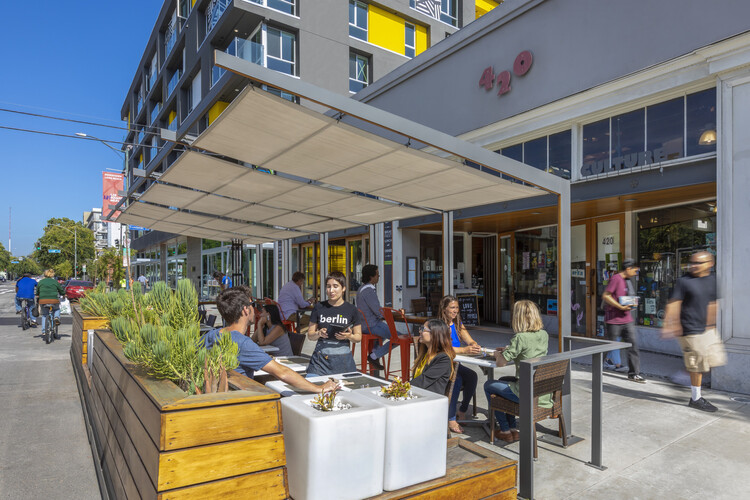
Fourth Street Improvements. Image via Studio One Eleven
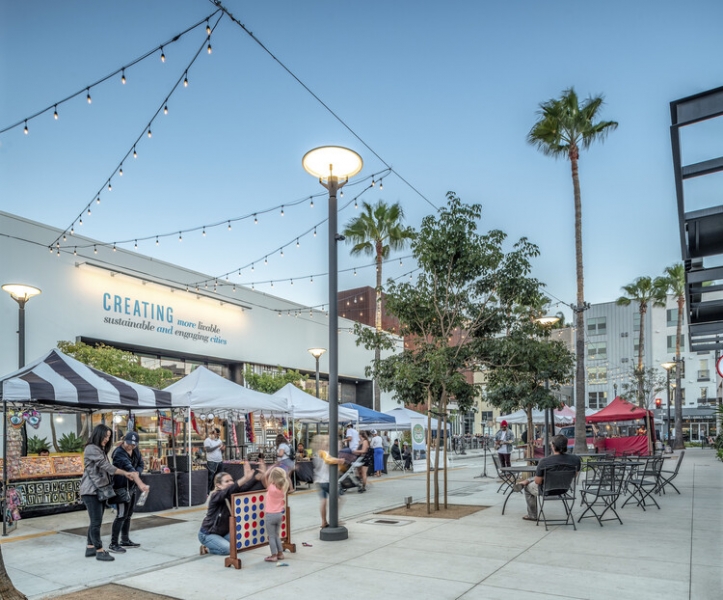
The Streets. Image © Carlos R. Hernandez
KO: How do you incorporate sustainable initiatives into your projects?
AP: Sustainability demands a multi-pronged approach. We’re signatories to the AIA’s 2030 Challenge, where we’ve committed that our projects will be zero-carbon by 2030. To do that, we’re designing all-electric buildings with solar production on-site, taking advantage of passive climate strategies, and using highly energy-efficient systems and components.
Beyond building systems, we’ve always focused on adaptive reuse, not just for individual buildings but from a district-wide perspective, knowing that the greenest building is the one we already have. We’ve converted obsolete buildings into breweries, food hubs, and housing. When building new, we try to think of future use scenarios as well as current programs, providing buildings resilience to change. Unfortunately, that hasn’t always been the attitude in Southern California, where in the past, we’ve built cheaply and in a single use-fashion, making future reuse challenging. We’ve been employing life cycle assessments to make the business case for reusing an existing building or future-proofing a new one.
Transportation is also a significant sustainability issue, with single-person car trips still the dominant mobility option in our region. So, we are intentional about working on projects with access to transit stops bike lanes, and other alternative transit networks, and designing buildings that encourage walking and biking as preferred ways to get around.
These ideas are encapsulated in our workspace. We adaptively reused a department store adjacent to one of the region’s major rail lines and dedicated bikeways, designed with high-efficiency equipment. As a result, our space has achieved a LEED Platinum certification, protecting the planet’s health, and WELL Gold Certification, a program that protects the health of our team. Also, we’re created social sustainability by co-tenanting with other creative firms and non-profits, and we offer our space free of charge for community events.
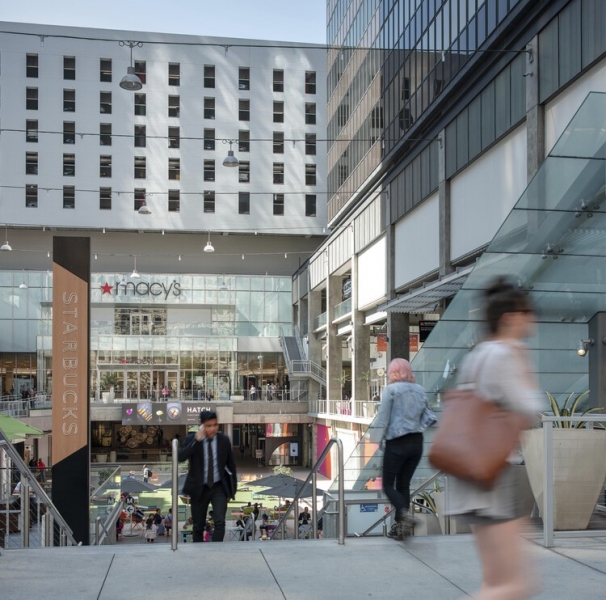
The Bloc. Image © Carlos R. Hernandez
KO: What’s a city you’ve traveled to or read about recently that has inspired you and influenced your day-to-day work?
AP: I’ve spent time in London for the past few years and am inspired by that city. The public markets are energetic, and many areas have vibrant street life. I’m also impressed with the larger regeneration projects I’ve encountered and the “meantime” activations and interventions that have activated those sites as development unfolds. Kings Cross in London is an excellent example of recycling structures and adding new buildings and mixed uses, stitched together with great urban design and exceptional architecture. An ambitious and experimental art program adds to the area’s interest. I’ve had a chance to visit that redevelopment over several years, and each time I visit, the experience is better.
I know our practice will remain committed to incremental infill projects going forward. Still, projects such as Kings Cross have inspired us to leverage the knowledge we’ve gained on smaller projects to tackle much larger redevelopment schemes on brownfield and greyfield sites. For example, I think our Fourth and Central project with David Adjaye’s office was influenced by King’s Cross in how our master plan weaves into the surrounding urban fabric and creates various old and new buildings. Another large-scale project for us is West Harbor, currently under construction on 42 acres adjacent to the Port of Los Angeles in San Pedro. This project will combine retail, dining, entertainment, and a 6500-seat amphitheater and festival lawn in a destination that recognizes Los Angeles’ identity as a port town. With landscape and open space design by James Corner Field Operations, West Harbor will be the public’s window into a working waterfront, adding a dynamic place of commerce and activity to the civic landscape. It joins our work to reimagine the Fun Zone along Orange County’s Balboa Peninsula, and our project to create a community-informed vision plan for the Long Beach shoreline, as initiatives into more extensive scale planning and regeneration along the California coastline.
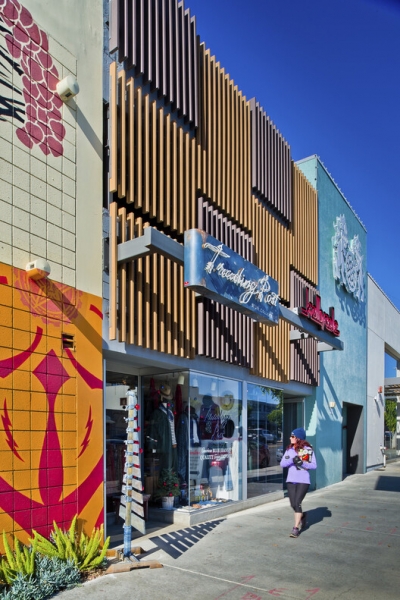
La Brea Corridor. Image © Carlos R. Hernandez
KO: What’s one thing you hope to accomplish in the next five to ten years at Studio One Eleven?
AP: Cities are resilient, and I know they will bounce back from the crises they have faced recently. Much of our current work is helping cities reinvent what their downtown can become in the aftermath of the pandemic. That includes repurposing underutilized office buildings for housing, creating new community buildings, and developing activation strategies for streets and parks to attract an apprehensive public back into communal life. We would like to continue to build upon the work we’ve been doing to address homes for those struggling with affordability or homelessness and create a sense of community and collective place in a divisive time. We’re also interested in design that supports sustainable mobility in our region and enhances the public realm. Design is an indispensable tool for building a more livable and just environment. But it can’t solve today’s social problems, and in many cases, it can exacerbate them. Our dream project would incorporate all the themes I mentioned to regenerate a district or part of the city, designed and built with the input of the existing community. And with processes and protections in place to ensure those who are already there can benefit from the improvements and not be pushed out.
Our projects are starting to incorporate those measures in meaningful ways. Equitable development goals are top of mind, even as market forces still present challenges. In the next five years, I hope Studio One Eleven will continue to show by example how architecture can work to promote the cities we need to all thrive. Being an integral part of that conversation is a responsibility for design professionals, making it a challenging yet immensely rewarding time to be an architect.

Studio One Eleven HQ. Image © Carlos R. Hernandez
Editor’s Note: This article was originally published on February 14, 2023.
